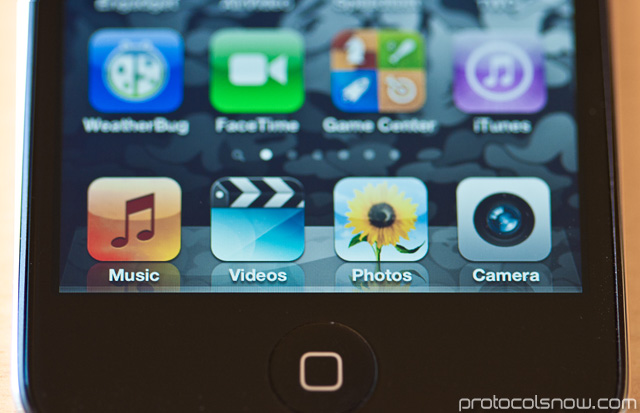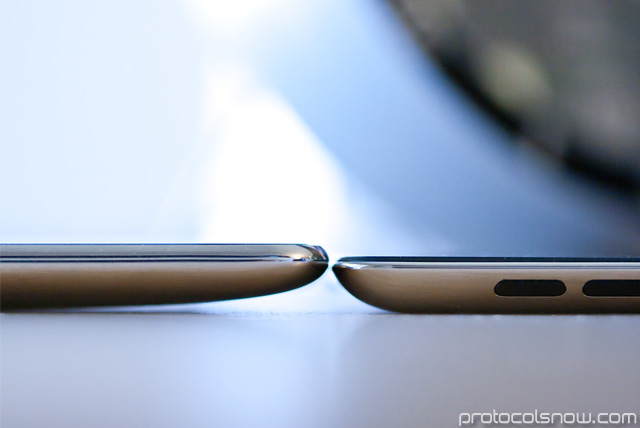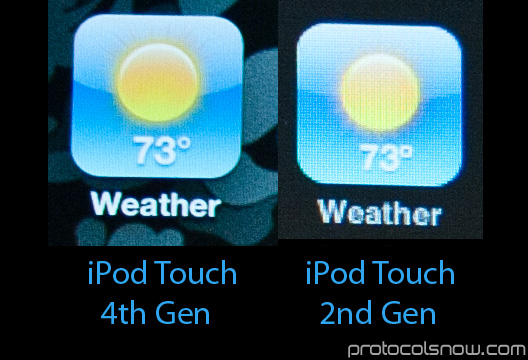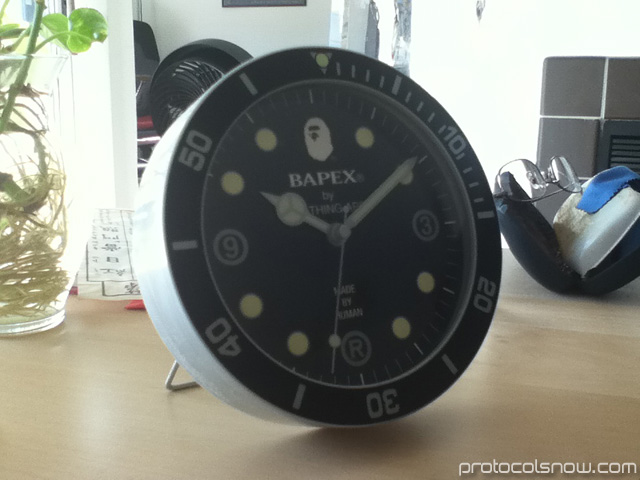iPod Touch 4th generation
My first and only Apple product, an iPod Touch 2nd gen, was given by my medical school last year so that I could use pertinent apps while working at the hospital. When it comes to mp3 players, I have long been a supporter of Korean devices from iRiver and Cowon that even today offer the best audio quality in the business. However, they can’t compete with Apple’s devices in the categories of internet browsing and App support, which these days are more practical for me. So my media player of choice has gradually gravitated to the iPod Touch.

Apple released the 4th generation (4G) of the iPod Touch just a few days ago. At first glance, the new iPod Touch appears to finally catch up with the iPhone in terms of features. The list of upgrades certainly sound impressive: 720p HD video recording, front and rear-facing cameras, built-in microphone, FaceTime video calls through Wi-Fi, higher resolution screen, faster CPU, thinner body. Do we finally have the long-desired “iPhone equivalent without the phone”? But even after a cursory playtest, the components are without a doubt lower quality in comparison to the iPhone 4.
My biggest disappointment is the rear-facing camera. iPhone 4 is capable of taking photos at 2592 x 1936 pixels while iPod Touch can only manage 960 x 720 pixels. Image resolution isn’t everything, of course, but to make matters worse, the iPod camera is fixed-focus and does not have auto-focus or flash. That means awesome software like Pleco’s Chinese character recognition software will not work (this is the single most impressive iPhone app I have ever seen). The less sensitive sensor results in lower quality photos and videos that exhibit grainy quality in even the best lighting conditions. Here is a test sample; I have many more below.

The new higher resolution screen, codenamed “Retina Display” in Apple marketing speak, is most certainly impressive but again is inferior on iPod. iPhone 4 has an IPS display with more intense colors and better viewing angles. Viewing the iPod screen from any direction other than straight-on washes out the display.
However, I have to weigh my disappointment with the inferior hardware against the reality that Apple went above and beyond with this product. Realistically, Apple could have easily pushed out a 4G iPod Touch with just retina display and faster CPU and then called it a day. No matter how bad the cameras may be, just having them available is certainly better than having none at all. Likely the only reason Apple even included cameras at all is to expand their FaceTime audience. This is clearly the biggest generation jump in the iPod Touch line and the closest it has come to parity with the iPhone. I am the last person who will make excuses for Apple, but the two products cater to different markets and I can understand that Apple wants to protect its flagship device by intentionally downgrading the iPod.

2G on left, 4G on right
So rather than match iPod Touch against iPhone, comparing my 2nd gen with the 4th gen is more reasonable. 4G is even thinner than the 2G, which is Apple’s explanation for the poor camera. You can’t fit an iPhone caliber camera into a frame this thin! Given the choice between a thicker body with better camera or the superthin 4G, I would gladly take the improved camera.

4G on left, 2G on right
Side by side, clearly the 2G is slightly wider. What’s difficult to tell in this photo is the impressive high pixel density display on 4G. Retina Display is not just Apple marketing hype; photos can not capture the incredible resolution of the display. Individual pixels are not discernible with the naked eye. Sure, the viewing angles on iPod are bad, but nearly all the time you’re going to be looking at the screen head-on anyway.

I cropped this comparison of 4G vs. 2G weather icons from my high-res photo above. The difference in text is particularly impressive. Whether browsing web pages or using apps, text resolution is significantly improved system-wide. When I showed my brother this comparison, he described it as the difference between PNG and JPG. That pretty much says it all.
FaceTime video calling is a useless feature for me since nobody I know uses that app. But the neat thing about having a built-in microphone is that I can make Wi-Fi Skype phone calls. I tested Skype and the quality was crystal clear and crisp, both receiving and broadcasting. Skype video calls are blocked unfortunately, obviously due to conflict of interest with Apple’s FaceTime app.
To test photo and video capability, I brought along the 4G iPod yesterday for some real world demos in a variety of lighting situations. Unless specifically indicated otherwise, all photos and videos for the rest of this article were taken on the iPod.

Outdoors on the golf range with the sun behind me, this is the best lighting condition possible for the iPod. This photo quality would be perfectly fine for uploading to Facebook or Twitter, and I would consider posting photos like this on my website if I did not have better alternatives. But if you take a closer look, details in this photo are muddled and quality is slightly grainy. I would rate the iPod camera better than my free 2009 Verizon phone but worse than my 2003 point-and-shoot camera, a Canon Powershot Digital Elph.
While not spectacular, HD videos are more impressive and surprisingly look quite good in bright conditions. I had difficulty gripping the iPod comfortably because of its thin body, but with some practice, smooth videos can be recorded. I would definitely appreciate image stabilization technology and the microphone is too sensitive (it blows up with the slightest wind or bass as evident in the two videos above), but these are luxuries that are only found in current dedicated cameras. For what it’s worth, this video quality easily surpasses my 2003 Canon Powershot.



With bright indoor fluorescent lighting, the iPod camera continues to hold up well. I am actually more impressed by these photos than the outdoor ones. Still not as crisp as I would like, but certainly usable. Depending on your standards of quality and your needs, these might even be perfectly fine.


Indoors with natural lighting is where the iPod begins to falter. This grainy quality is obvious to everyone. Tolerance is very weak for less than ideal lighting conditions.

In low light conditions, good luck. These were taken after sunset with about half an hour left until complete darkness. Still quite bright outside, but the iPod really struggles.


This is a completely unfair comparison, but just for fun I recreated this Bape clock photo that I posted a few days ago. iPod Touch 4G vs. Canon Digital Rebel XTi with 18-55mm lens.
As I reasoned earlier, I view camera and video functionality as a free bonus to the iPod line and no matter the quality, any camera is certainly better than having none at all. But without question, the iPod Touch 4G is an inferior product to the iPhone 4. What I’ve realized is that I am not going to be happy with this iPod Touch when what I really want is an iPhone 4 or the next-generation Android phones. I am reluctant to pay monthly data fees for smartphones, but with iPhone 4 rumored to debut on Verizon Wireless in January 2011, returning this iPod Touch and waiting to see the new phones is an option I am currently considering.
To protect the iPhone, Apple will likely never deliver a true “iPhone without the phone” experience in its iPod line. Another manufacturer will have to challenge the market leader. Is there anyone who will step up? We are all still waiting.
